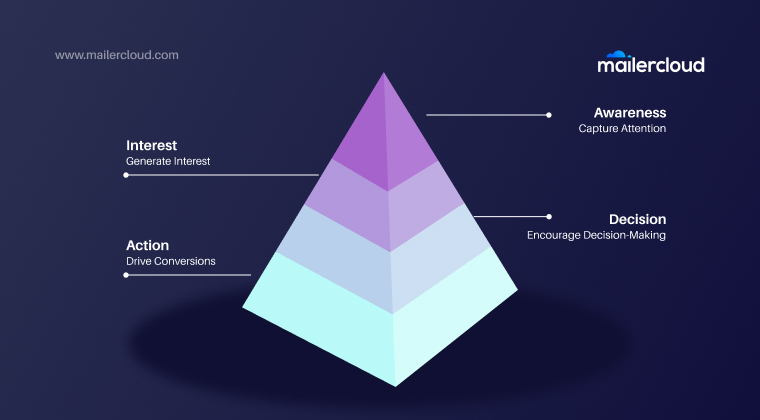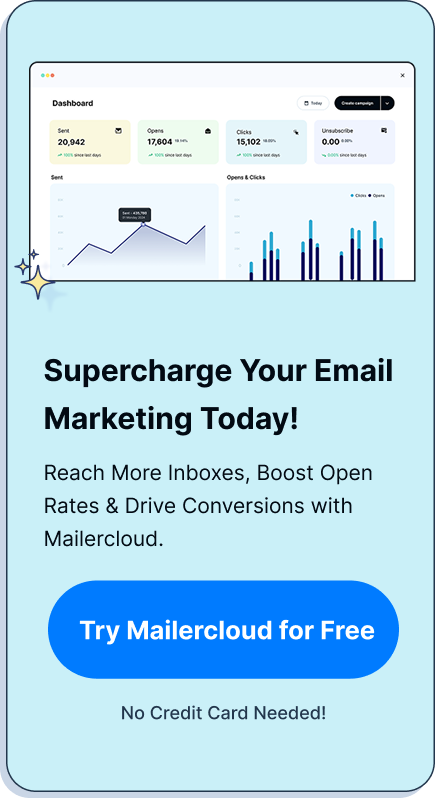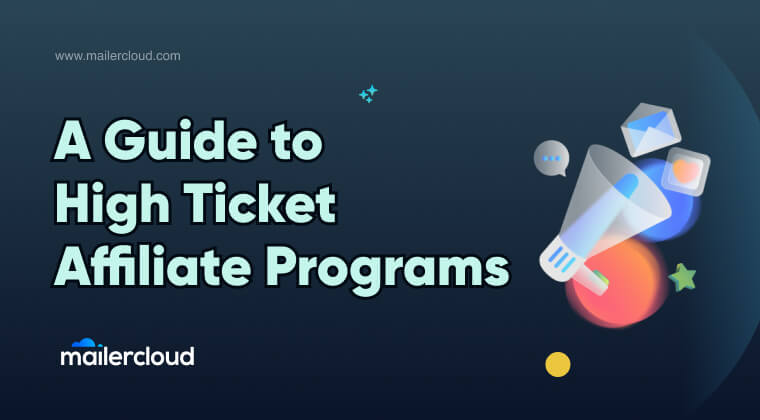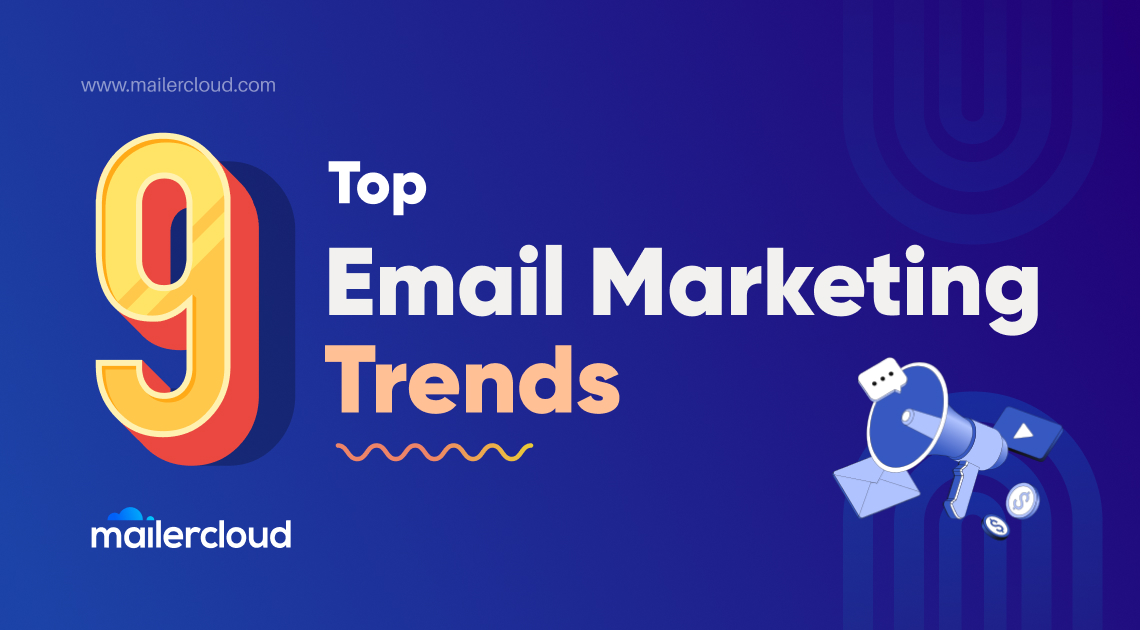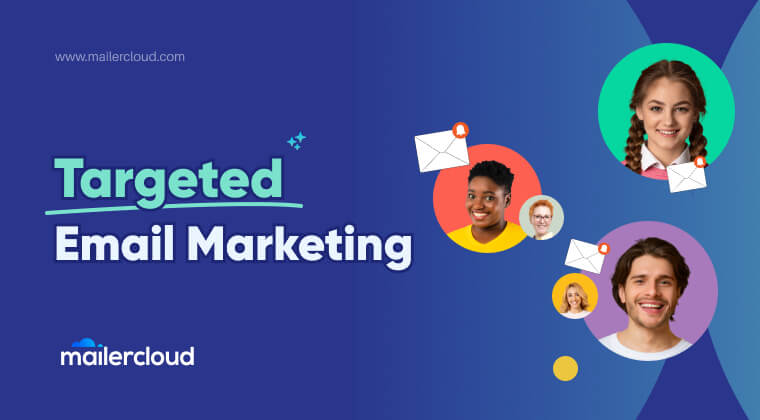In the dynamic world of digital marketing, understanding how to effectively convert visitors into paying customers is crucial. This is where the concept of a funnel, specifically a click funnel, comes into play. This article is worth reading because it demystifies the concept of click funnels, offering practical insights into how they work, why they are essential, and how to create and optimize them for your business success.
Table of Contents
What is a Funnel?
A funnel in digital marketing is a series of steps designed to guide potential customers through the purchasing process. The funnel metaphor is used because it represents how leads are gradually filtered down to become paying customers. At the top of the funnel, you have a large number of potential customers. As they move through each stage of the funnel, some will drop off, leaving you with the most qualified leads at the bottom, ready to make a purchase.
The stages of a typical funnel include awareness, interest, decision, and action. Each stage plays a crucial role in moving the customer closer to a purchase, ensuring that by the time they reach the end of the funnel, they are ready to buy.
What Makes a Click Funnel Unique?
Click funnels are a specific type of sales funnel designed to automate the process of converting visitors into customers. Unlike traditional sales funnels, click funnels utilize a series of web pages, each with a specific purpose, to guide users towards a conversion event. The term “click funnel” refers to the series of pages that users click through to reach the final conversion.
A click funnel typically includes a landing page, sales page, order form, and a thank you page. Each page in the funnel is optimized to increase conversion rates, using compelling copy, engaging visuals, and strategic calls to action. Click funnels also leverage email marketing and automation to nurture leads and move them through the funnel efficiently.
The Difference Between Click Funnels and Traditional Sales Funnels
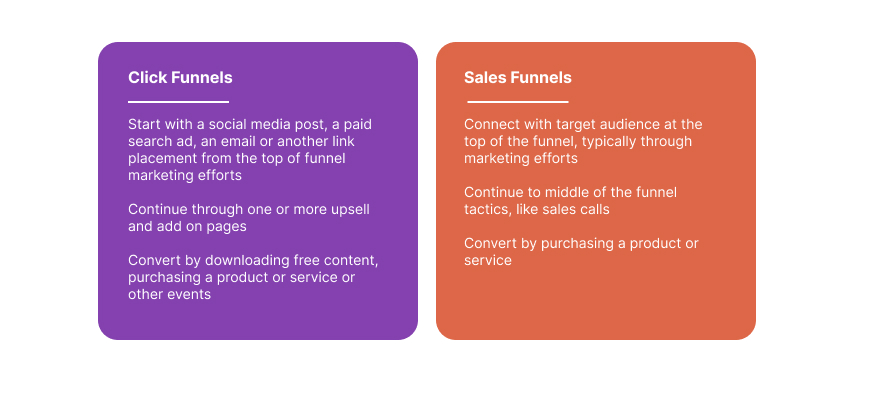
Traditional sales funnels often rely on a mix of online and offline strategies to guide customers through the buying process. These might include physical store visits, phone calls, and email communications. In contrast, click funnels are entirely online, making them more efficient and easier to track.
Another key difference is the level of automation. Click funnels use automation tools to handle repetitive tasks like sending follow-up emails, segmenting leads, and tracking user behavior. This automation not only saves time but also ensures a consistent and personalized experience for each user.
Creating a Click Funnel: Step-by-Step Guide
Creating a click funnel involves several steps, each designed to optimize the customer journey from awareness to conversion. Here’s a step-by-step guide:
1. Define Your Goal: What do you want to achieve with your click funnel? Whether it’s generating leads, making sales, or promoting a webinar, having a clear goal will guide the rest of the process.
2. Identify Your Target Audience: Understanding who your potential customers are will help you create a funnel that speaks directly to their needs and pain points.
3. Create a Compelling Landing Page: The landing page is the first step in your click funnel. It should capture the visitor’s attention and encourage them to take action, whether it’s signing up for a newsletter or downloading a free guide.
4. Build Your Sales Page: The sales page should provide more detailed information about your product or service, highlighting its benefits and addressing any objections the visitor might have.
5. Design an Order Form: The order form is where visitors convert into customers. It should be simple, straightforward, and secure, with clear instructions on how to complete the purchase.
6. Set Up a Thank You Page: The thank you page is the final step in the funnel. It confirms the visitor’s purchase or action and can be used to upsell or offer additional resources.
Examples of Effective Click Funnels
To understand how click funnels work in practice, let’s look at a few examples:
1. Lead Generation Funnel: This type of funnel is designed to capture leads, typically by offering a free resource like an ebook or webinar in exchange for the visitor’s contact information.
2. Sales Funnel: A sales funnel guides the visitor through the entire buying process, from the initial landing page to the final checkout. It includes upsell opportunities to increase the average order value.
3. Membership Funnel: Membership funnels are used to convert visitors into paying members of a subscription service. They often include a free trial or limited-time discount to entice visitors to sign up.
The Role of Landing Pages in Click Funnels
Landing pages are a critical component of any click funnel. They are the first point of contact for visitors and play a crucial role in capturing their interest and encouraging them to take the next step.
A landing page should be focused on a single goal, whether it’s capturing leads or driving sales. It should have a clear and compelling headline, engaging visuals, and a strong call to action. The content on the landing page should be concise and relevant to the visitor’s needs, addressing their pain points and offering a solution.
Using ClickFunnels for Your Business: Benefits and Features
ClickFunnels is a popular platform for creating and managing click funnels. It offers a range of features designed to simplify the process of building effective funnels, including:
1. Drag-and-Drop Editor: Easily create and customize your funnel pages without any coding knowledge.
2. Pre-Designed Templates: Choose from a variety of professionally designed templates from the funnel builder to quickly set up your funnel.
3. Automation Tools: Automate your email marketing, lead nurturing, and follow-up processes.
4. Analytics and Tracking: Monitor your funnel’s performance and make data-driven decisions to improve conversion rates.
Using ClickFunnels can help you streamline your marketing efforts, improve your customer journey, and ultimately increase your sales.
Email Marketing and Click Funnels: A Powerful Combination
Email marketing plays a vital role in the success of click funnels. By integrating email marketing with your click funnel, you can nurture leads, build relationships, and drive repeat sales.
An effective email marketing strategy involves sending targeted and personalized emails to your leads at each stage of the funnel. These emails can include welcome messages, product updates, special offers, and more. Automation tools within ClickFunnels allow you to segment your audience and send the right message at the right time, increasing the chances of conversion.
Optimizing Your Click Funnel for Better Conversion Rates
To get the most out of your click funnel, it’s essential to continuously optimize it for better conversion rates. Here are some tips:
1. A/B Testing: Test different versions of your funnel pages to see which ones perform better.
2. Optimize Your Copy: Make sure your headlines, calls to action, and body text are compelling and persuasive.
3. Improve Page Load Speed: A slow-loading page can cause visitors to drop off. Ensure your pages load quickly to keep visitors engaged.
4. Use Analytics: Monitor your funnel’s performance and identify areas for improvement. Look at metrics like bounce rate, conversion rate, and average time on page and funnel drop-off rate to understand where users are exiting the funnel and how you can improve those stages.
Common Mistakes to Avoid When Creating Click Funnels
While click funnels can be highly effective, there are some common mistakes to avoid:
1. Not Defining a Clear Goal: Without a clear goal, your funnel won’t be as effective. Make sure you know what you want to achieve before you start building.
2. Overcomplicating the Funnel: Keep your funnel simple and focused. Too many steps can confuse and overwhelm visitors.
3. Ignoring Mobile Optimization: Ensure your funnel pages are optimized for mobile devices, as a significant portion of traffic comes from mobile users.
4. Neglecting Follow-Up: Don’t forget to follow up with leads and customers. Use email marketing to stay in touch and nurture relationships.
Summary
- A funnel is a series of steps designed to guide potential customers through the purchasing process.
- Click funnels automate the conversion process using a series of optimized web pages.
- Click funnels differ from traditional sales funnels in their level of automation and online focus.
- Key steps to create a click funnel include defining your goal, identifying your target audience, and building compelling funnel pages.
- Effective click funnels include SEO lead generation, sales, and membership funnels.
- Landing pages play a crucial role in capturing interest and driving conversions.
- ClickFunnels offers features like a drag-and-drop editor, pre-designed templates, and automation tools.
- Integrating email marketing with marketing funnels enhances lead nurturing and repeat sales.
- Continuous optimization, including A/B testing and copy improvements, is essential for better conversion rates.
- Avoid common mistakes such as lacking a clear goal, overcomplicating the funnel, ignoring mobile optimization, and neglecting follow-up.
Lina is a content writer with a passion for reading, writing, and cooking. She aims to explore the world of words and flavors. With a deep love for literature and a knack for creating mouthwatering recipes, she strive to engage and inspire others through her work.





























